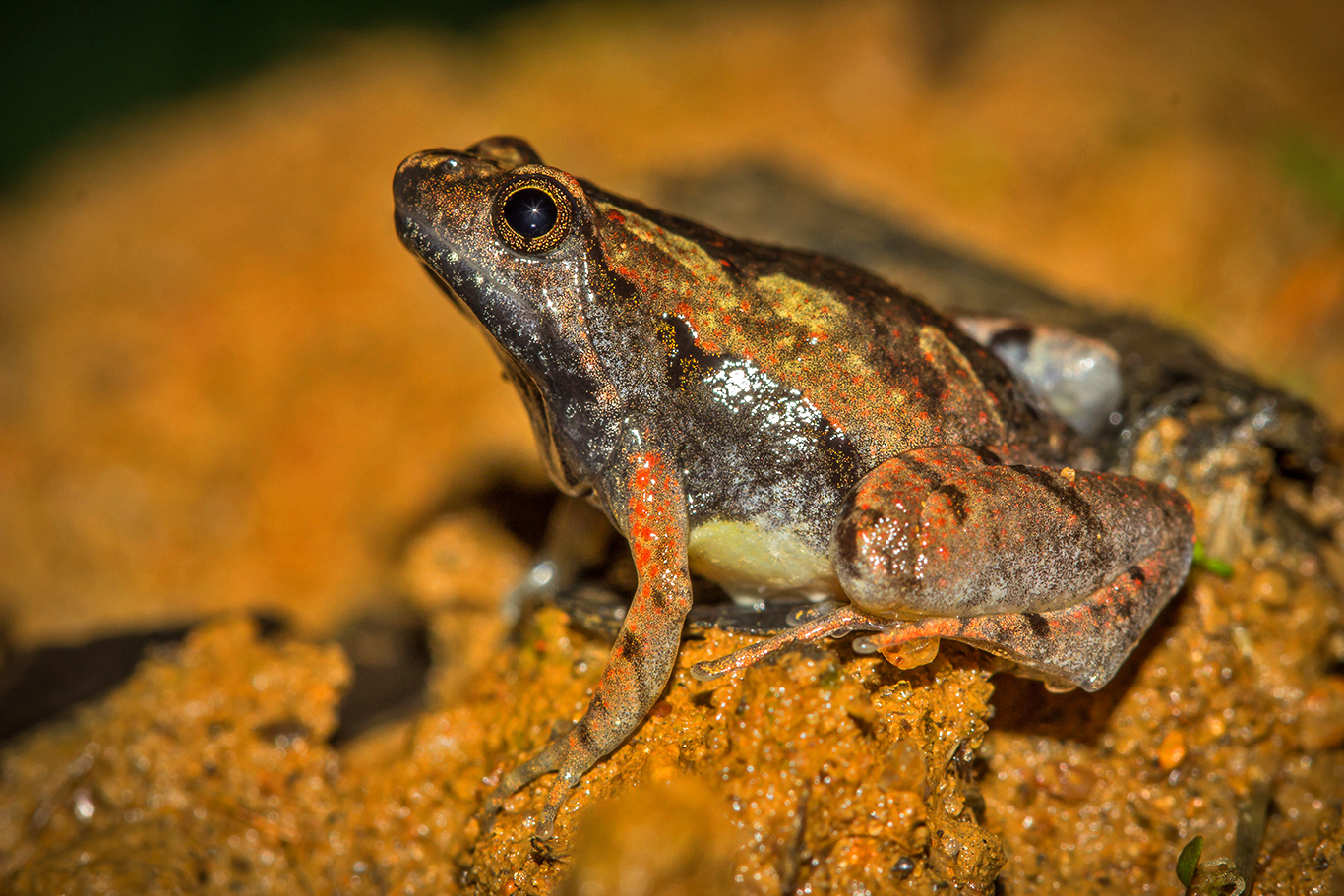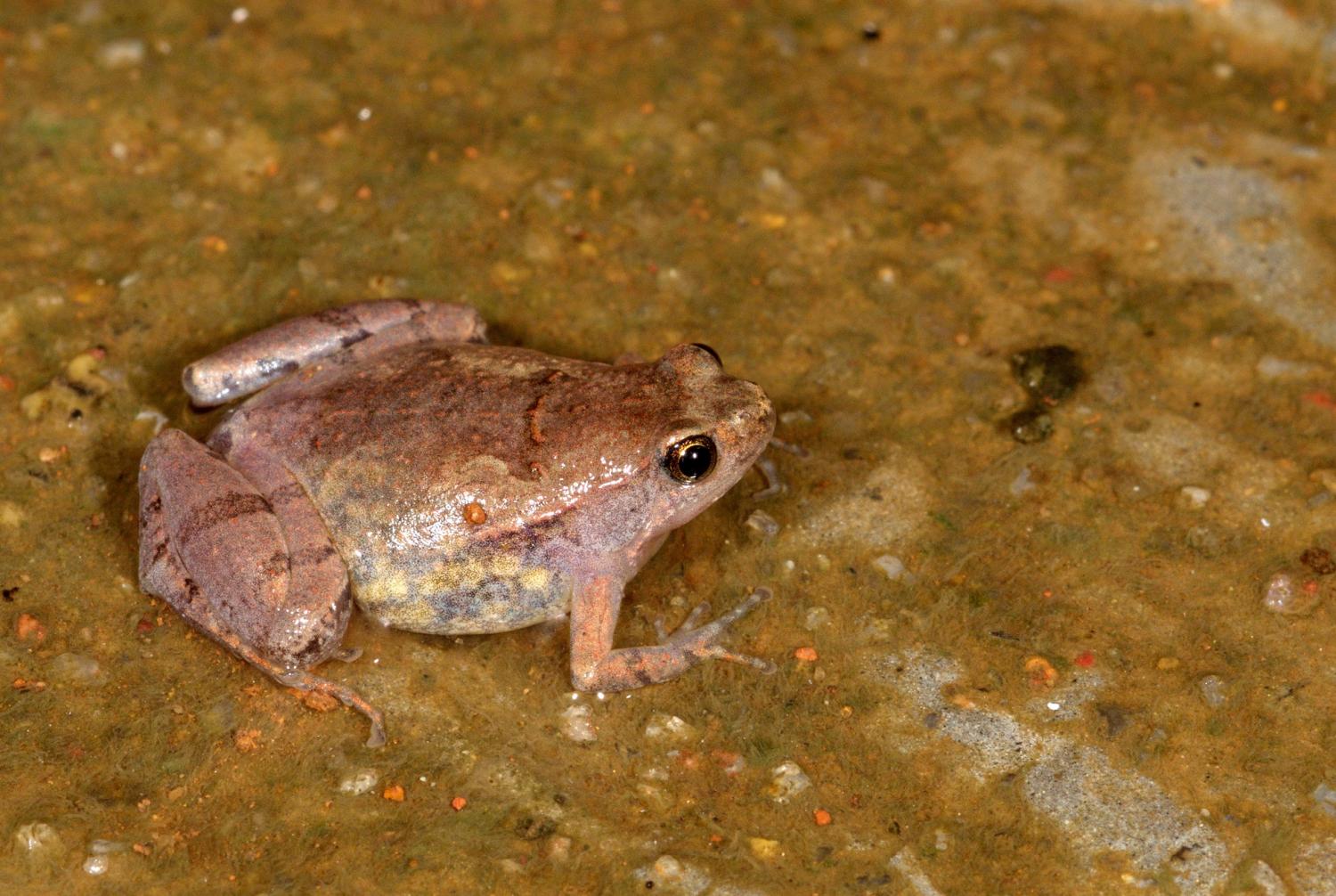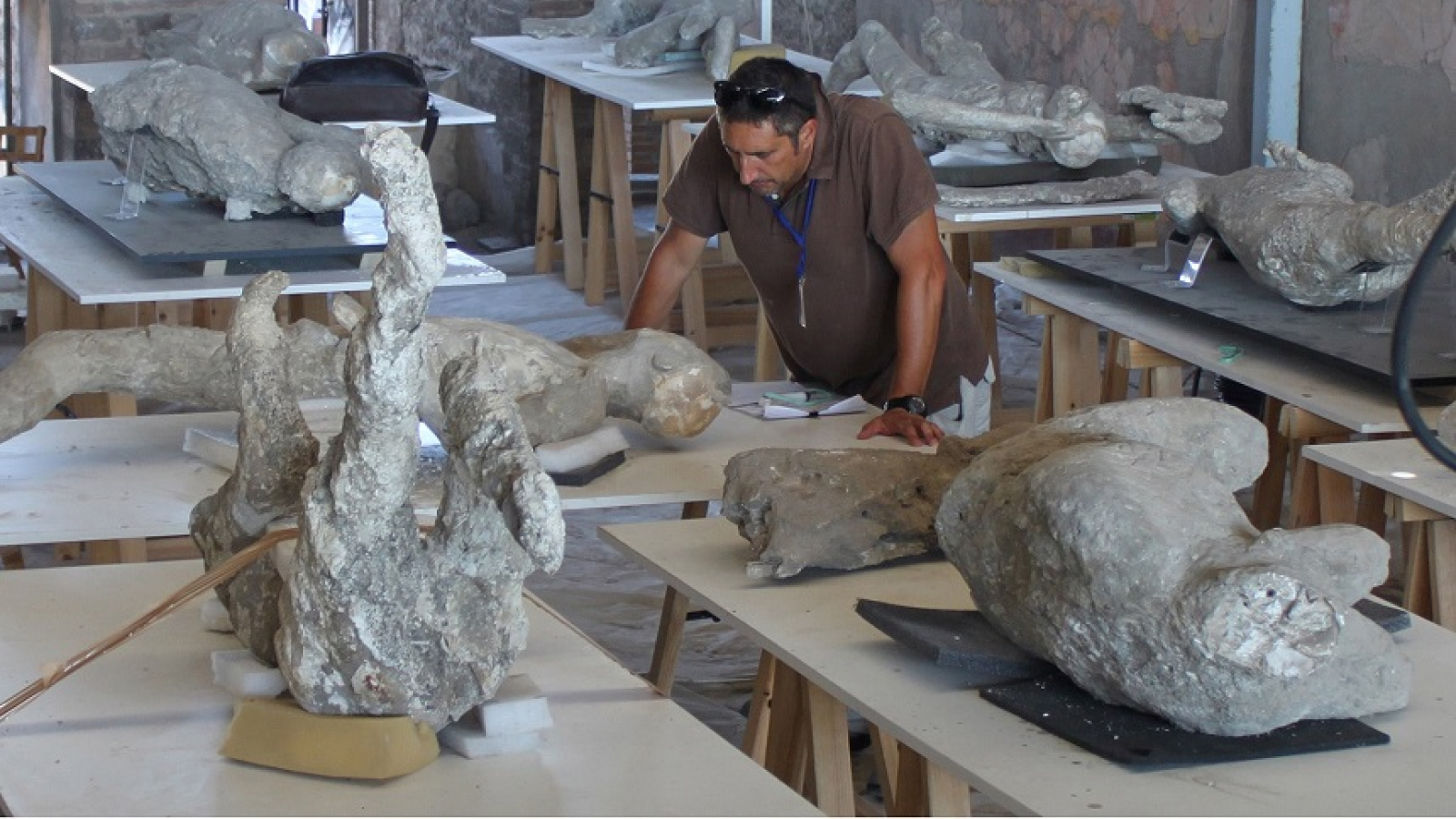'Wasteland' Frog Fits on a Thumbnail, Chirps Like a Cricket

A tiny new frog species — so small that it can sit comfortably on the tip of your thumb and with a distinctive call that sounds like a cricket's chirp — was recently discovered in the southwestern plains of India, and was described in a new study.
Researchers gave the frog the scientific name Microhyla laterite, and the common name laterite narrow-mouthed frog, based on its laterite habitat — rocky terrain made of weathered, iron-rich soil — in and near the coastal town of Manipal, in Karnataka State. They reported the length of an adult male as 0.7 inches (16.6 millimeters), with the female a few millimeters longer.
Though M. laterite closely resembles other small frog species in India like M. ornata and M. sholigari, genetic analysis confirmed that the newbie was an undescribed species, the study authors reported. [40 Freaky Frog Photos]
Unlike other recent amphibian discoveries in India, which typically emerge from protected areas or biodiversity hotspots, this wee amphibian makes its home in what appears to be an inhospitable place. People are frequent visitors, and quarrying, dumping and overgrazing have taken a toll on the landscape, according to the researchers.
"Wasteland" diversity
But in spite of this region's classification by the government as a "wasteland," it hosts a surprising amount of biodiversity, according to study co-author Ramit Singal, who led a citizen science initiative there called "My Laterite: My Habitat", in order to document and evaluate its animal diversity.
Singal, an independent researcher, told Live Science in an email that he and a fellow frog enthusiast joked about discovering new species as they investigated the area in 2013.
Get the world’s most fascinating discoveries delivered straight to your inbox.
"We often discussed how cool it would be," Singal said. But they thought it was too much of a long shot to take seriously, "a far-fetched fantasy of two friends just recently introduced to the world of frogs," he said. However, the fantasy suddenly became very real when they spotted the frog eventually described as M. laterite, which eluded their identification efforts for months.
Further investigation over the next year brought them no closer to identifying the mystery frog. Singal reached out to other researchers, who used DNA evidence and analysis of the frog's physical features to confirm that it was a new species.
Hiding in plain sight
Study co-author Kadaba Shamanna Seshadri told Live Science in an email that people shouldn't be surprised when new species turn up in unexpected places like urban landscapes.
According to Seshadri, a doctoral student from the biological sciences department at the National University of Singapore's Faculty of Science, people assume that if there were a new species to be found in a heavily populated area, scientists already would have found it. Curiosity and an open mind are key aspects of seeing what might be right under your nose, he added.
"It was out there all the time. And if Ramit had not seen and questioned its identity, we probably would have continued to live not knowing what was around," Seshadri said.
And when animals such as the laterite narrow-mouthed frog live in unprotected regions like these laterite hills and plateaus, engaging the people that share their landscape is a critical part of ensuring the little frog's future.
"For the people living in Manipal, it should be easy to connect with the frog," he said. "Hopefully we have won their hearts to an extent that they get protective toward the frog and its habitat."
The findings were published online March 9 in the journal PLOS ONE.
Follow Mindy Weisberger on Twitter and Google+. Follow us @livescience, Facebook & Google+. Original article on Live Science

Mindy Weisberger is a science journalist and author of "Rise of the Zombie Bugs: The Surprising Science of Parasitic Mind-Control" (Hopkins Press). She formerly edited for Scholastic and was a channel editor and senior writer for Live Science. She has reported on general science, covering climate change, paleontology, biology and space. Mindy studied film at Columbia University; prior to LS, she produced, wrote and directed media for the American Museum of Natural History in NYC. Her videos about dinosaurs, astrophysics, biodiversity and evolution appear in museums and science centers worldwide, earning awards such as the CINE Golden Eagle and the Communicator Award of Excellence. Her writing has also appeared in Scientific American, The Washington Post, How It Works Magazine and CNN.



